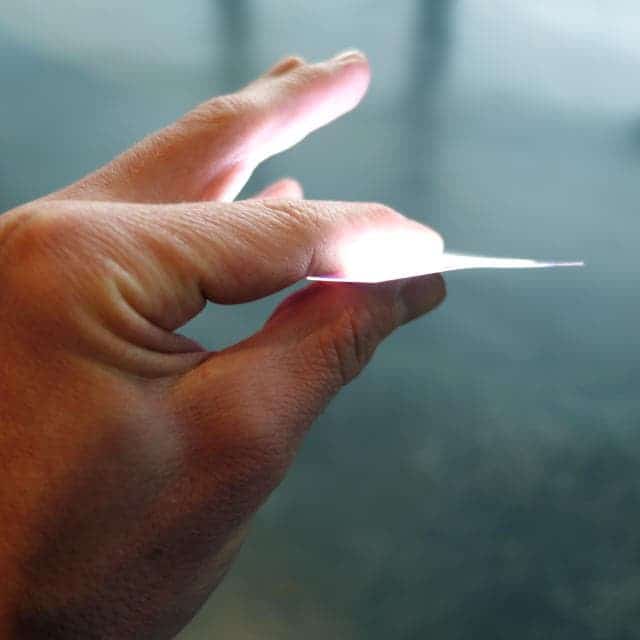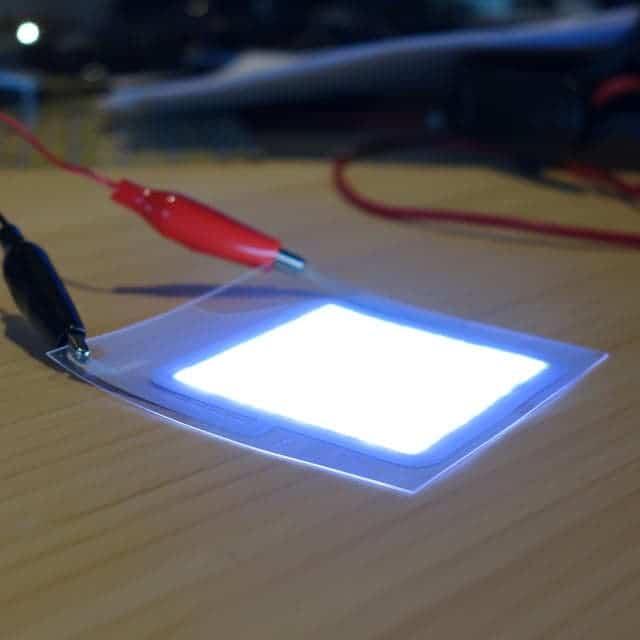When I first heard about 3-D printing, I was completely stoked. The whole concept blew me away and changed forever what I thought of ‘printing’. We now also know about machines that print metals, food and even human organs, why not light too? While not a 3D printer, Rohinni’s Lightpaper technology can be credited as innovative; once more lifting the margin and changing the paradigm of what can be printed and on what.

Credit: Rohinni
Basically, Lightpaper is made by printing incredibly tiny LEDs with ink on a conductive sheet. The sheet is then sandwiched between two other layers and sealed. The tiny diodes are about the size of a red blood cell, and randomly dispersed on the material. When current runs through the diodes, they light up.

credit: Rohinni
Organic light emitting diodes (OLDs) have allowed TV screens thinner than tenth of an inch to be manufactured, but this isn’t what Lightpaper is intended for, according to Rohinni CMO Nick Smoot. The company is interested in markets such as the automotive industry, where they could make excellent taillights, or branding. Lightpaper could be used to light up logos on a mobile phone or other devices. Indeed, there would be a great deal of marketing efforts that could benefit from cheap LEDs that are thin enough to be applied to virtually any surface.
It does have some drawbacks. For one, because the diodes aren’t distributed evenly, the Lightpaper isn’t as bright over the whole surface. The effect isn’t noticeable for most of its applications, but it could use improving.









